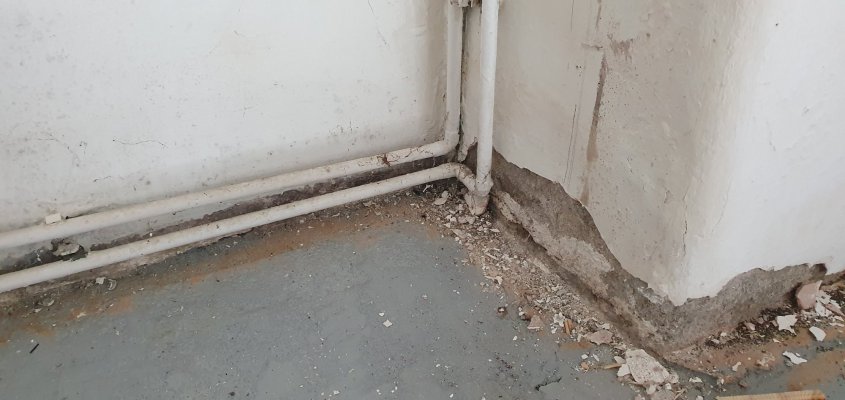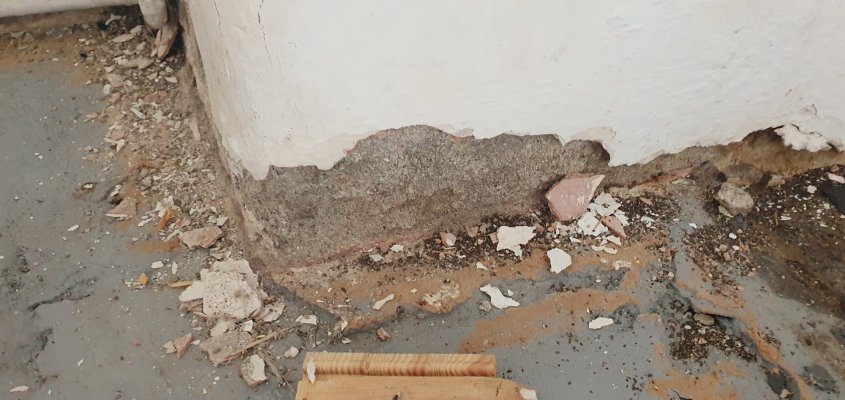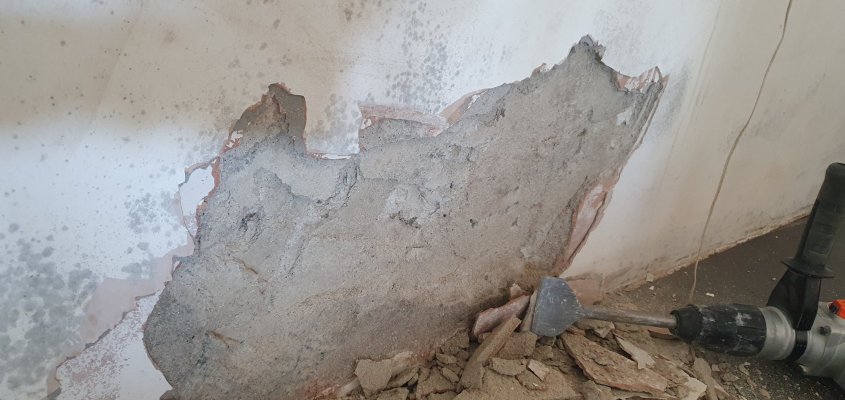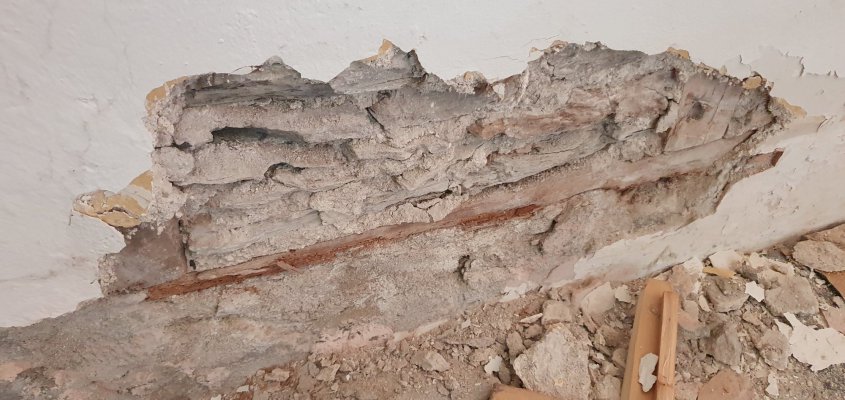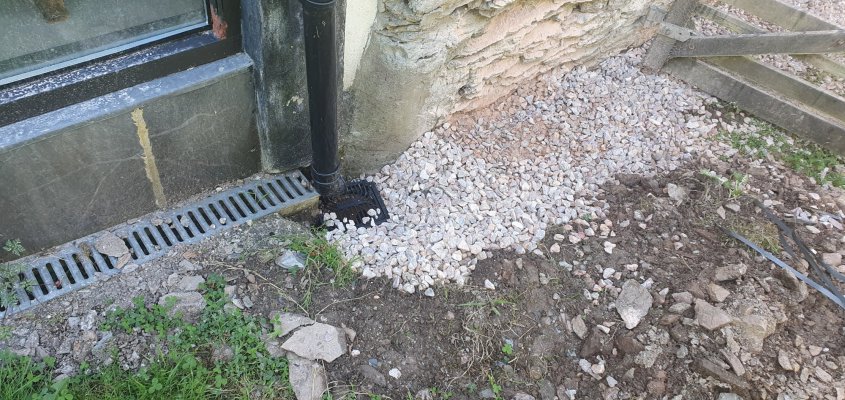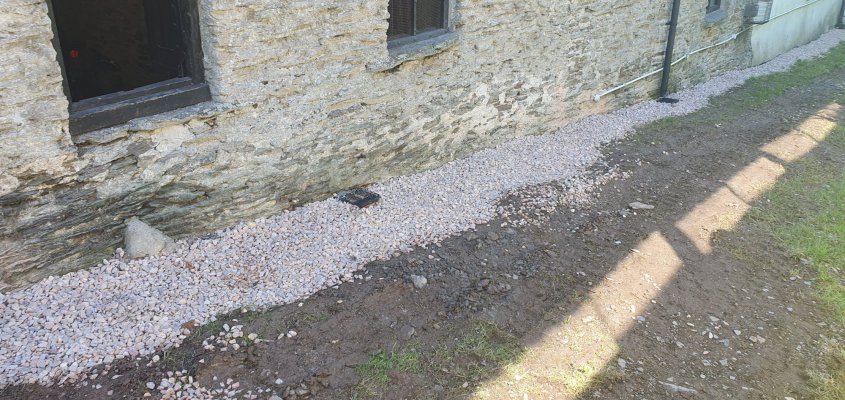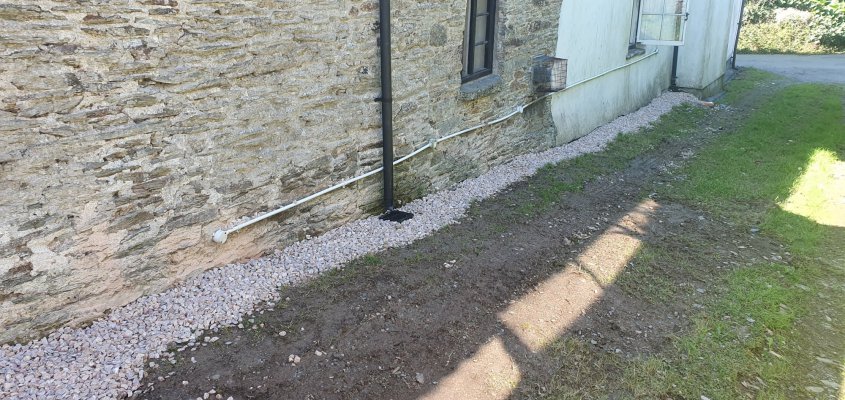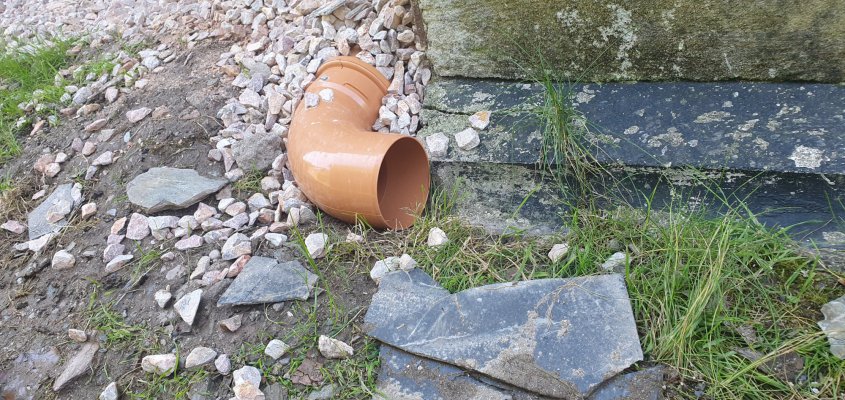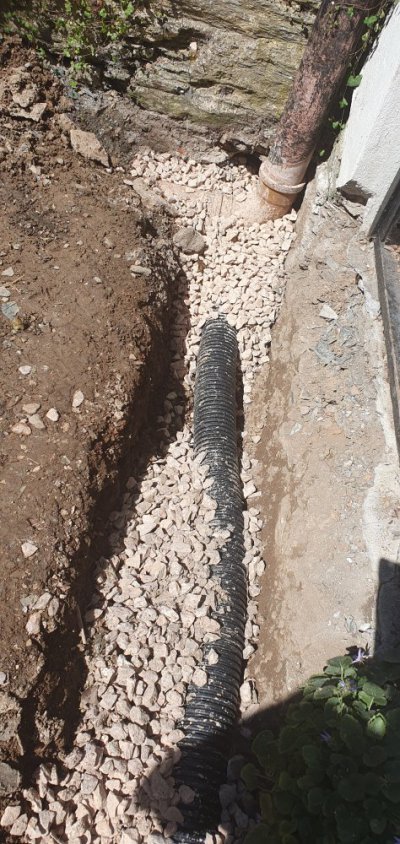There are a lot of threads on topic of damp. Wasn't sure which to add my damp question to so thought I'd create a new one! not sure what the etiquette is..
quick recap - I bought a 320 year old house. A damp proof company recommended £20ks worth of DPC and impervious membrane slurry. I almost committed to that strategy for the entire ground floor until I found this website.
After a best attempts to understand damp causes and remediation, I decided that DPC and membrane just wasn't the right thing. Instead - address the more likely source of water and use breathable plaster on internal walls. My house appears to have a cement render on the outside which I understand means that breathable internal walls therefore even more critical. And, throwing in a sprinkle of consistent heating and ventilation.
So, I'm taking it wall by wall and trying to decide what the best approach is for each. i.e. whether I need to take it right back to original stone, or whether I can just chip back until I find super dry render and patch it up from there with breathable lime. Also, I've got one wall which I'm not sure if/how I can address the source and so wondering if I need to resort to the damp proof membrane slurry.
So, wall number one. What's your name and where do you come from? I've whacked this plaster with a hammer and its sounds fine and it looks dry. It looks like its suffered from damp but I'm not sure. The paint is crumbly and a few bits of plaster have broken away. So, not sure what the remediation needs to be other than scraping it back until no more bits fall off and then re-plaster it?
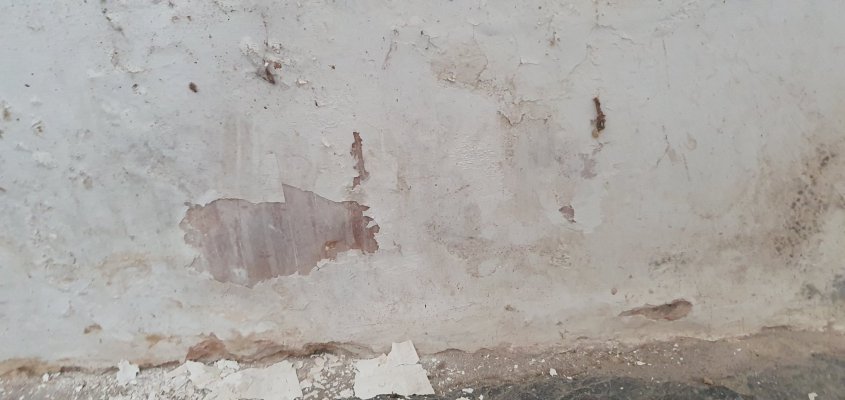
And, Wall #2, You're kind of similar but you've got some black mould around you. This wall was covered with wall units so it may just be condensation that has resulted in this? again, I thought, chip it back until all crappy bits fallen off, and then skim with plaster and job done. One plasterer I had said to chip it back to stone, and up to 1.2metre throughout the room and re-plaster. Which feels like overkill surely
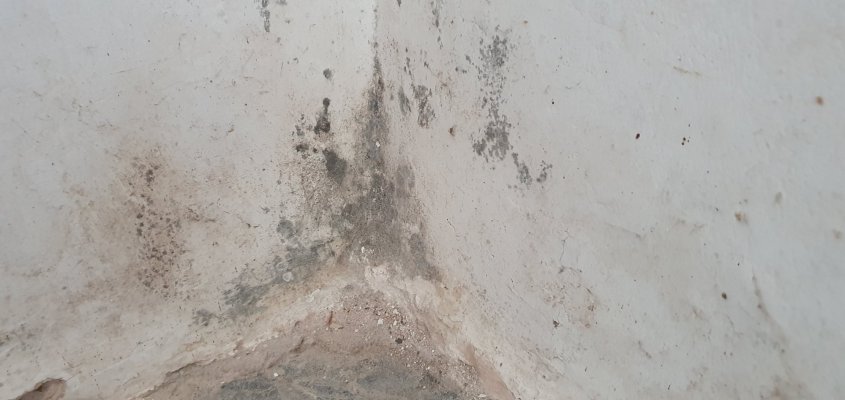
Right, Onto Wall #3 which is where it gets interesting, and where it looks nasty and what folks might actually say is a proper damp issue. As you can see from below, it certainly looks wet. Its also wet to touch. The outside ground level is approx 2 to 3 feet from the window sill which coincides with the start of the damp in that corner (actually, its wet to that level all along the wall). So, the possible causes are (numbered in red in the pic)
1. outside ground level being higher than inside. Not sure what I can do about that.
2. This gulley massively overflows when its heavy rain. It literally cant take all the water. I wonder if a bigger one would resolve that issue? In addition, Ive spoken to a guttering specialist who reckons we could reduce the amount of water going to that corner by redirecting the flow round the other side of property. The water just spews out onto the stones in that corner.
3. This is a waste water outlet from a bathroom upstairs. I have no idea if leaking or no.. its a possibility
4. The pointing in general around that area is poor but wouldnt that have cause
Do you think 1 and 2 alone would be sufficient to cause the state of the wall?
so.. whats the best way to address this last wall #3? in this instance, would tanking it with membrane and slurry be an exception to the rule? (in addition to trying to address the rainwater issue)
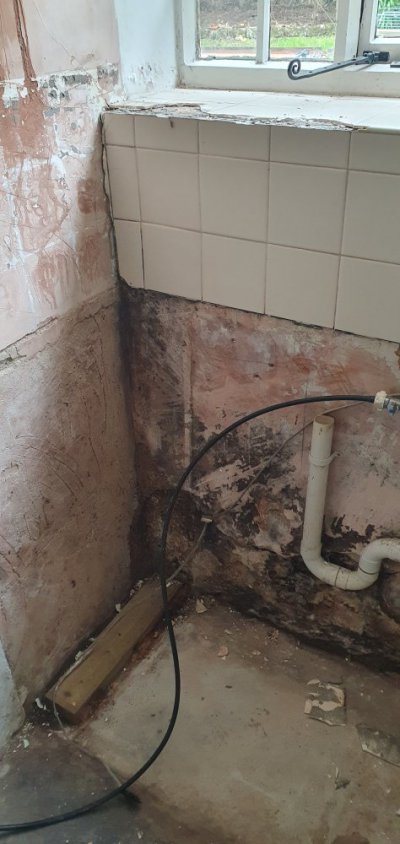
I've got pics of a bunch of other walls but I thought this was enough to be getting on with!!
Best
Brian
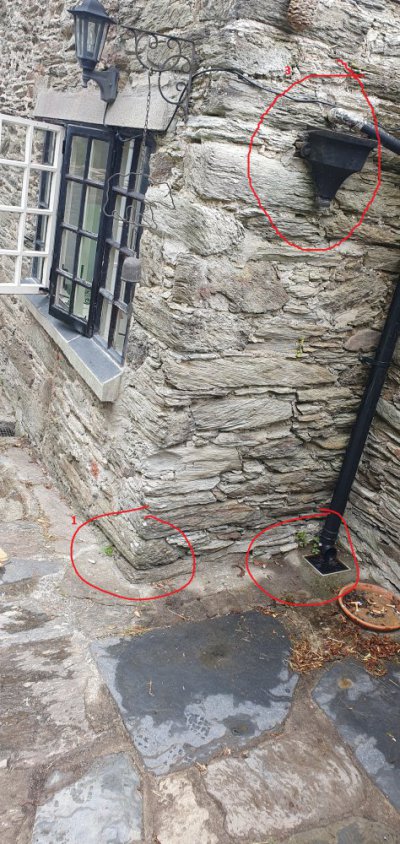
quick recap - I bought a 320 year old house. A damp proof company recommended £20ks worth of DPC and impervious membrane slurry. I almost committed to that strategy for the entire ground floor until I found this website.
After a best attempts to understand damp causes and remediation, I decided that DPC and membrane just wasn't the right thing. Instead - address the more likely source of water and use breathable plaster on internal walls. My house appears to have a cement render on the outside which I understand means that breathable internal walls therefore even more critical. And, throwing in a sprinkle of consistent heating and ventilation.
So, I'm taking it wall by wall and trying to decide what the best approach is for each. i.e. whether I need to take it right back to original stone, or whether I can just chip back until I find super dry render and patch it up from there with breathable lime. Also, I've got one wall which I'm not sure if/how I can address the source and so wondering if I need to resort to the damp proof membrane slurry.
So, wall number one. What's your name and where do you come from? I've whacked this plaster with a hammer and its sounds fine and it looks dry. It looks like its suffered from damp but I'm not sure. The paint is crumbly and a few bits of plaster have broken away. So, not sure what the remediation needs to be other than scraping it back until no more bits fall off and then re-plaster it?

And, Wall #2, You're kind of similar but you've got some black mould around you. This wall was covered with wall units so it may just be condensation that has resulted in this? again, I thought, chip it back until all crappy bits fallen off, and then skim with plaster and job done. One plasterer I had said to chip it back to stone, and up to 1.2metre throughout the room and re-plaster. Which feels like overkill surely

Right, Onto Wall #3 which is where it gets interesting, and where it looks nasty and what folks might actually say is a proper damp issue. As you can see from below, it certainly looks wet. Its also wet to touch. The outside ground level is approx 2 to 3 feet from the window sill which coincides with the start of the damp in that corner (actually, its wet to that level all along the wall). So, the possible causes are (numbered in red in the pic)
1. outside ground level being higher than inside. Not sure what I can do about that.
2. This gulley massively overflows when its heavy rain. It literally cant take all the water. I wonder if a bigger one would resolve that issue? In addition, Ive spoken to a guttering specialist who reckons we could reduce the amount of water going to that corner by redirecting the flow round the other side of property. The water just spews out onto the stones in that corner.
3. This is a waste water outlet from a bathroom upstairs. I have no idea if leaking or no.. its a possibility
4. The pointing in general around that area is poor but wouldnt that have cause
Do you think 1 and 2 alone would be sufficient to cause the state of the wall?
so.. whats the best way to address this last wall #3? in this instance, would tanking it with membrane and slurry be an exception to the rule? (in addition to trying to address the rainwater issue)

I've got pics of a bunch of other walls but I thought this was enough to be getting on with!!
Best
Brian


